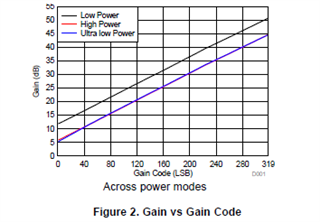Hello,
I am using the AFE5832 and trying to understand how to the time gain control works with the up/down ramp.
My general question is, how does the engine decide the combination of attenuation and AFE gain to achieve the specified start gain / stop gain and in between?
For example if the start gain is 30dB, is the attenuator gain set to -8 and the AFE gain to 38? Or -4 + 34? Or 0 + 30? How is this specified?
Thank you!
Bertrand



